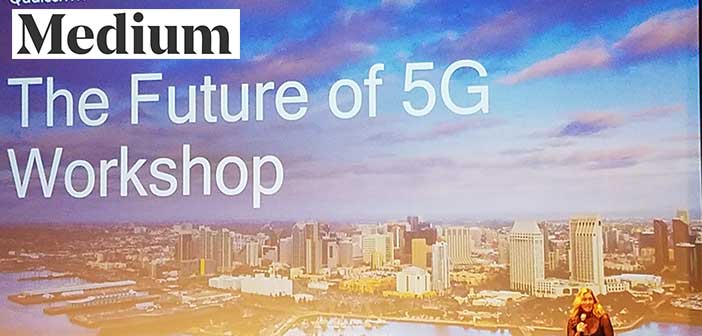28
Sep
Qualcomm: the Future of 5G Flows on its Innovations

Extraordinary innovations that are enabling 5G are built on a continuum of technological achievements in wireless networking, which the company highlighted at its annual conference.
In a grand event at its headquarters in San Diego, Qualcomm’s executives recalled how the seeds of 5G were sown decades ago and claimed the future of 5G will ride on its technologies. The speakers, including CTO Jim Thompson and the company’s R&D and product heads, time-traveled us back to the 1990s when EV-DO first introduced the basic concepts of wireless Internet, to LTE which brought techniques such as OFDMA used in 5G today, and concepts such as direct device-to-device that will fuel the future of 5G.
In the times when we are busy with immediacy, this was a refreshing perspective, realizing where we started, how far we have come, and how much more we have to go. Personally, I came out feeling very confident about the future of wireless technology in general, and 5G evolution in particular.
EV-DO was the first real mobile wireless broadband solution. Although other technologies such as GPRS existed, EV-DO, for the first time, introduced the concept of an All-IP data channel optimized for the extreme conditions of wireless. Features such as hybrid ARQ (HARQ), turbo coding, adaptive modulation, and opportunistic scheduling introduced during those times were used for 3G, 4G, and are a basic staple for 5G and beyond. Techniques such as carrier aggregation, VoIP over wireless and many others are also still being used and will continue to be used. OFDM/A that revolutionized mobile broadband with 4G LTE is the choice of waveform and access technology for 5G and its evolutions. The technologies behind C-V2X, and Slide-link, usage of unlicensed/shared spectrum, and many more that are part of the future of 5G, all came from cellular evolution. All of these are Qualcomm’s innovations.
The technologies that built 5G
While 5G has become almost a household term, the challenges of 5G and the innovations that solved them are still not very well known. And they look like “ wizardry” as The Wall Street Journal put it. Years back when 5G was being mulled over, many experts knew about the limitations of 4G, and the extreme needs of the next-generation wireless technology. But the challenge was not only developing a platform that addressed the current needs but also making it future proof.
In my view, developing a unified, flexible design based on scalable OFDMA and slot-based framework is one of the key contributions of Qualcomm to 5G. When I heard about it from engineers for the first time, it sounded almost utopian — “everything for everyone!” But kudos to the Qualcomm experts, it was standardized and commercialized in record time (remember 5G acceleration?). The framework is so flexible and scalable that any application that can be imagined now and in the foreseeable future can be supported with it.
Another path-breaking Qualcomm 5G invention was solving the millimeter wave (mmW) puzzle. It was an impossible challenge. Trust me when I say this because I have hands-on experience dealing with mmW. Making it work for mobiles and in outdoor environments is nothing short of a miracle and is in the same league as making CDMA work. Even after six months of first 5G deployments, nobody other than Qualcomm has been able to show a working device, let alone a commercial phone! This indeed is a testament to the complex art involved in making mmW work in phones. Notwithstanding the initial hiccups of one operator that is giving mmW some bad rap, very soon, all those bashers will realize the pivotal role mmW will play in making 5G a universal solution for everything connected. During the event, through multiple demos, Qualcomm went to lengths to show that mmW indeed works in non-line of sight (LoS) scenarios.

